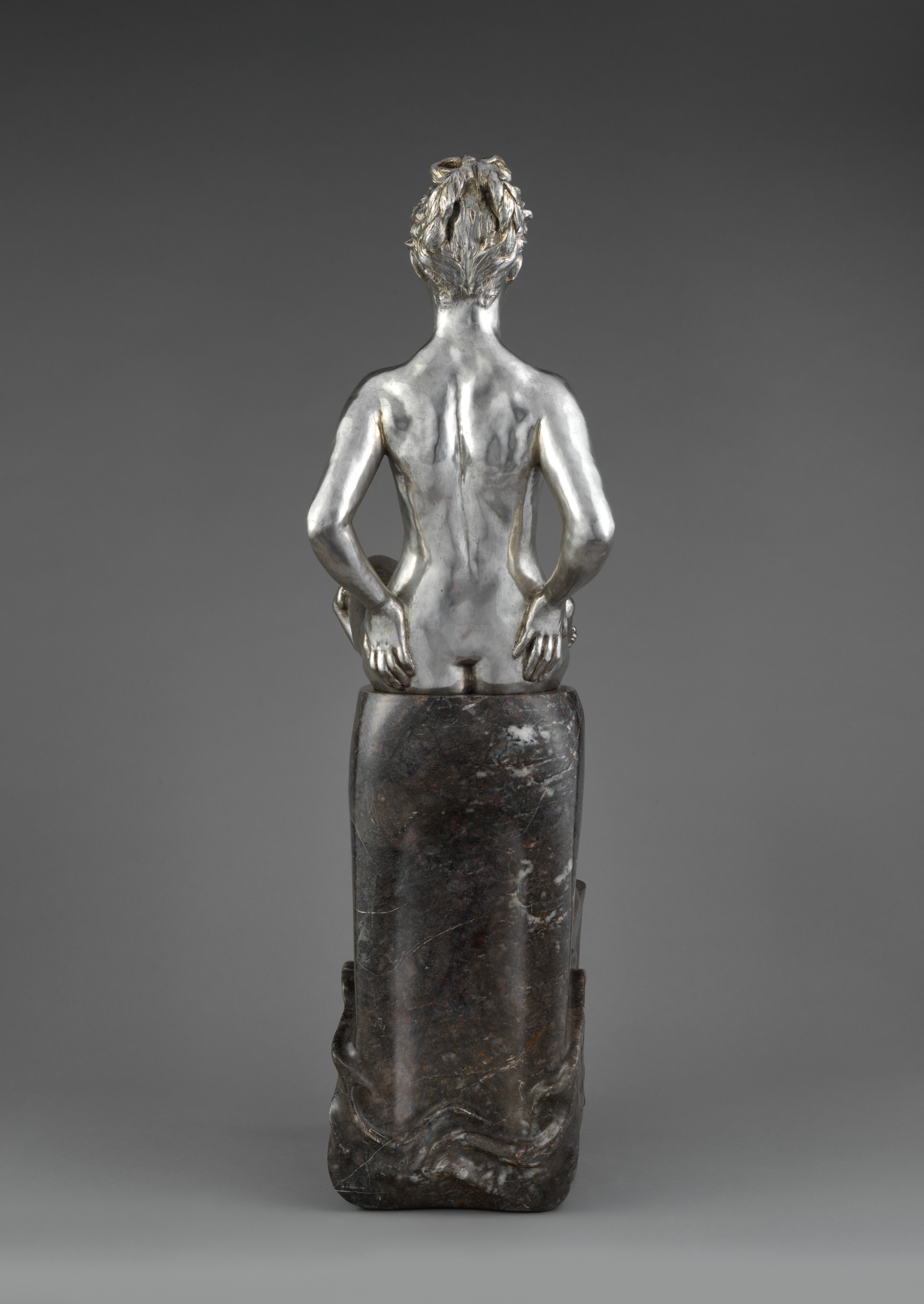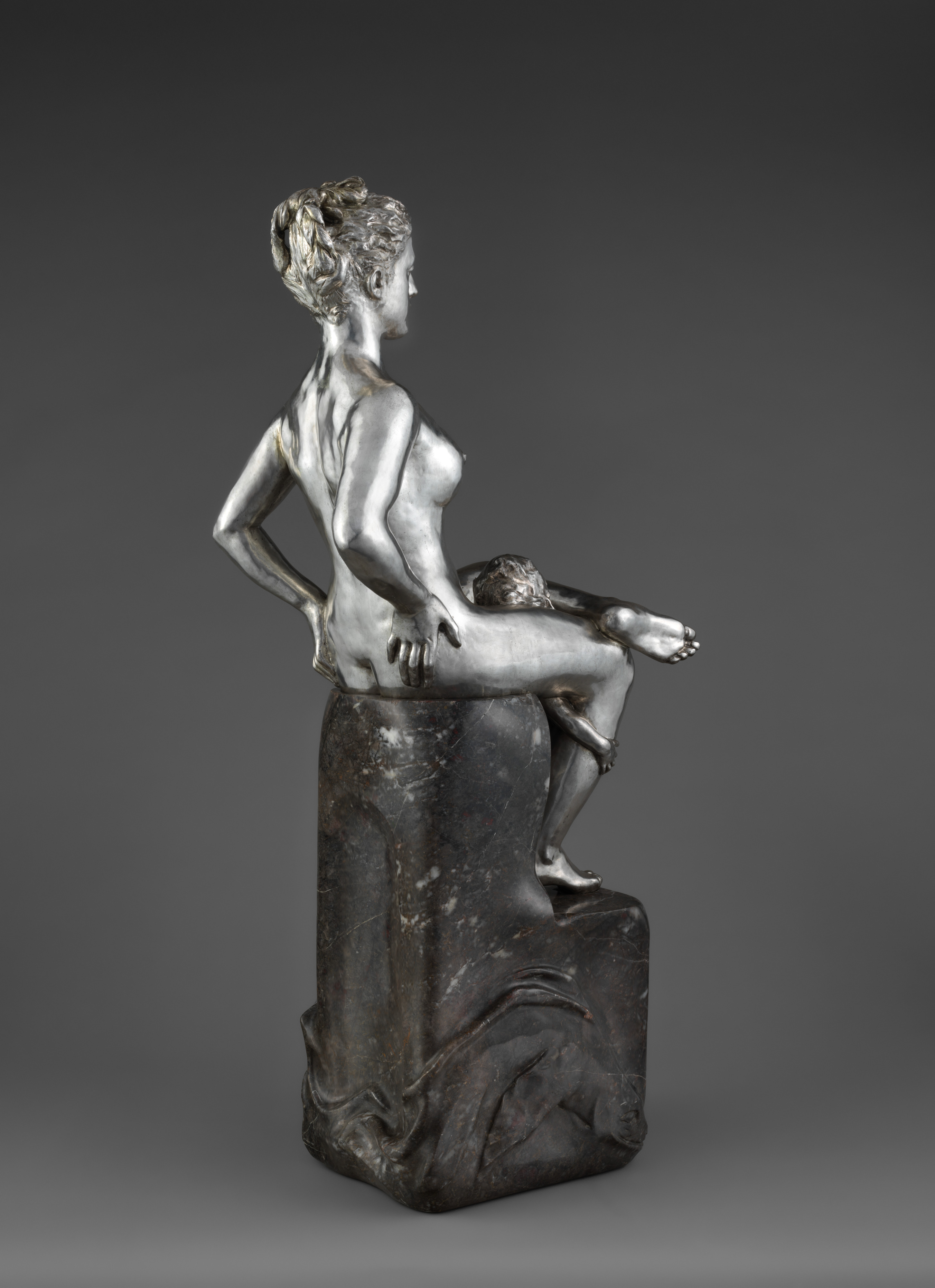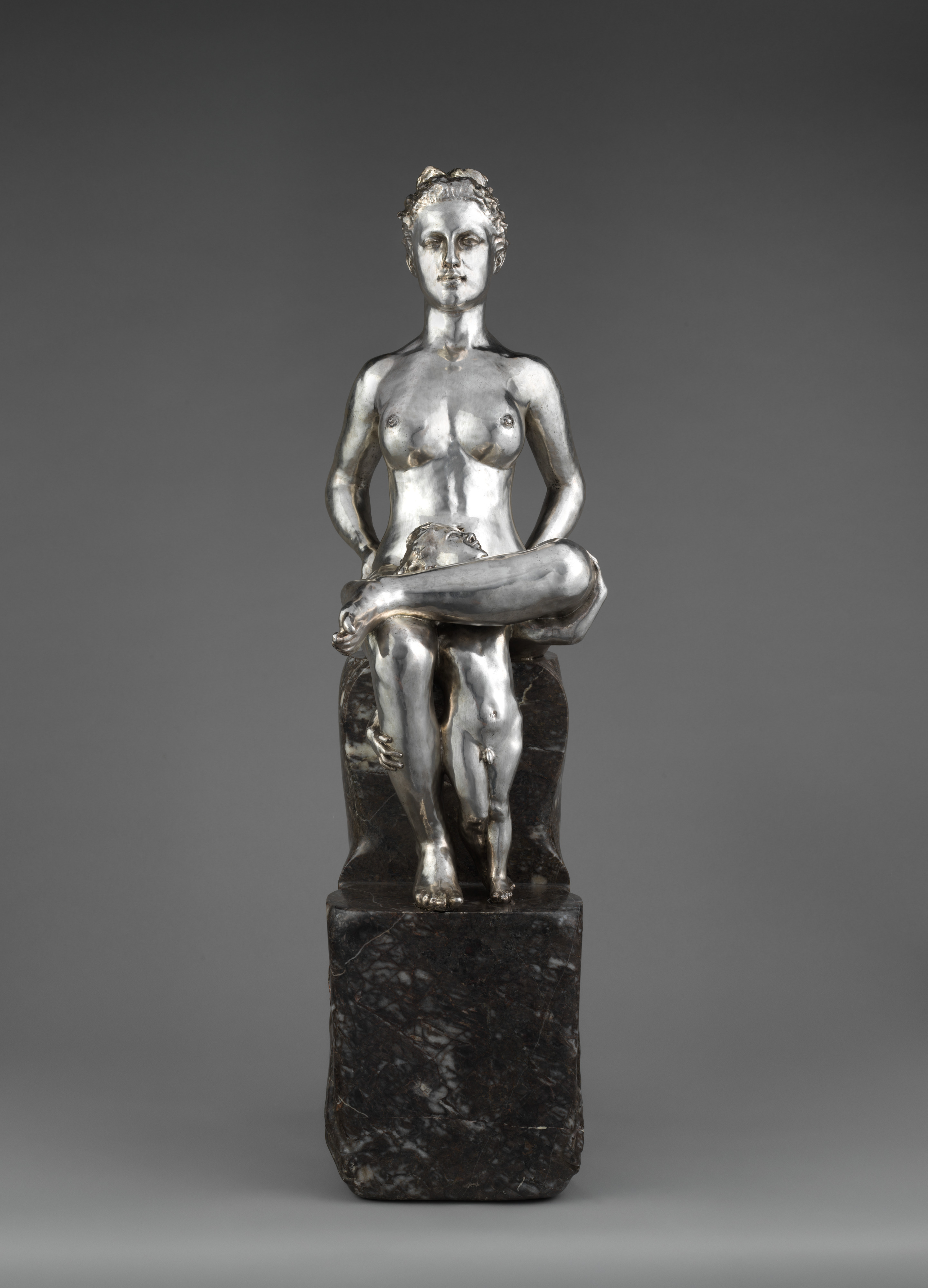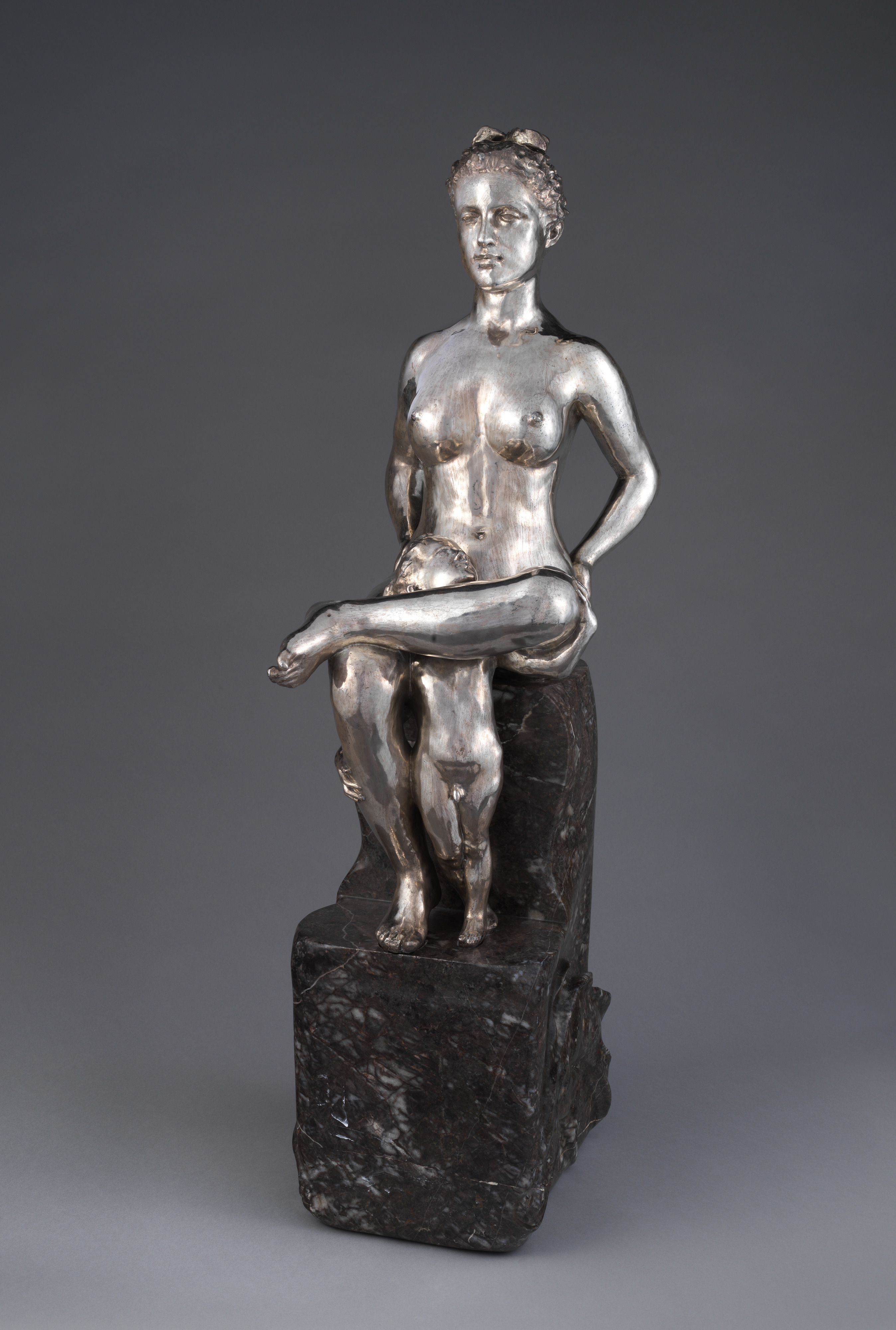Galatea
Max Klinger German
Cast by Noack and Brückner Foundry German
Born in Leipzig to a wealthy prominent family, and trained at the academy in Berlin, Max Klinger was an equally gifted painter, printmaker, and sculptor. He worked in a naturalistic figurative style and from it developed an art that was polemical in intent, uncanny in effect, and often controversial in reception.
Klinger created Galatea at the height of his artistic fame when he was celebrated in German speaking countries as one of their greatest sculptors. He was best known for his complex polychrome sculptures that were assembled from assorted colored marbles and bronze. The mythical sea-goddess and child seated on a marble throne is Klinger’s only independent figurative sculpture in silver. In 1906 Klinger presented Galatea as his principle work at the prestigious exhibition of German contemporary art in Weimar.
Shown in triumph, Klinger’s figure of the sea-goddess Galatea resonates with the primal aura of an idol. The subject was familiar to Klinger’s contemporaries from Goethe’s famous description of triumphant Galatea, "Grave in aspect like the gods, in dignified immortality…" (Faust II, 8387-90). But Klinger also drew from the contemporary philosophy of Nietzsche and Freudian psychology to create an unprecedented depiction of the goddess enthroned with a male child who together represent the archetypal union between body and mind, female and male, sexuality and the psyche.
Due to rights restrictions, this image cannot be enlarged, viewed at full screen, or downloaded.
This artwork is meant to be viewed from right to left. Scroll left to view more.












